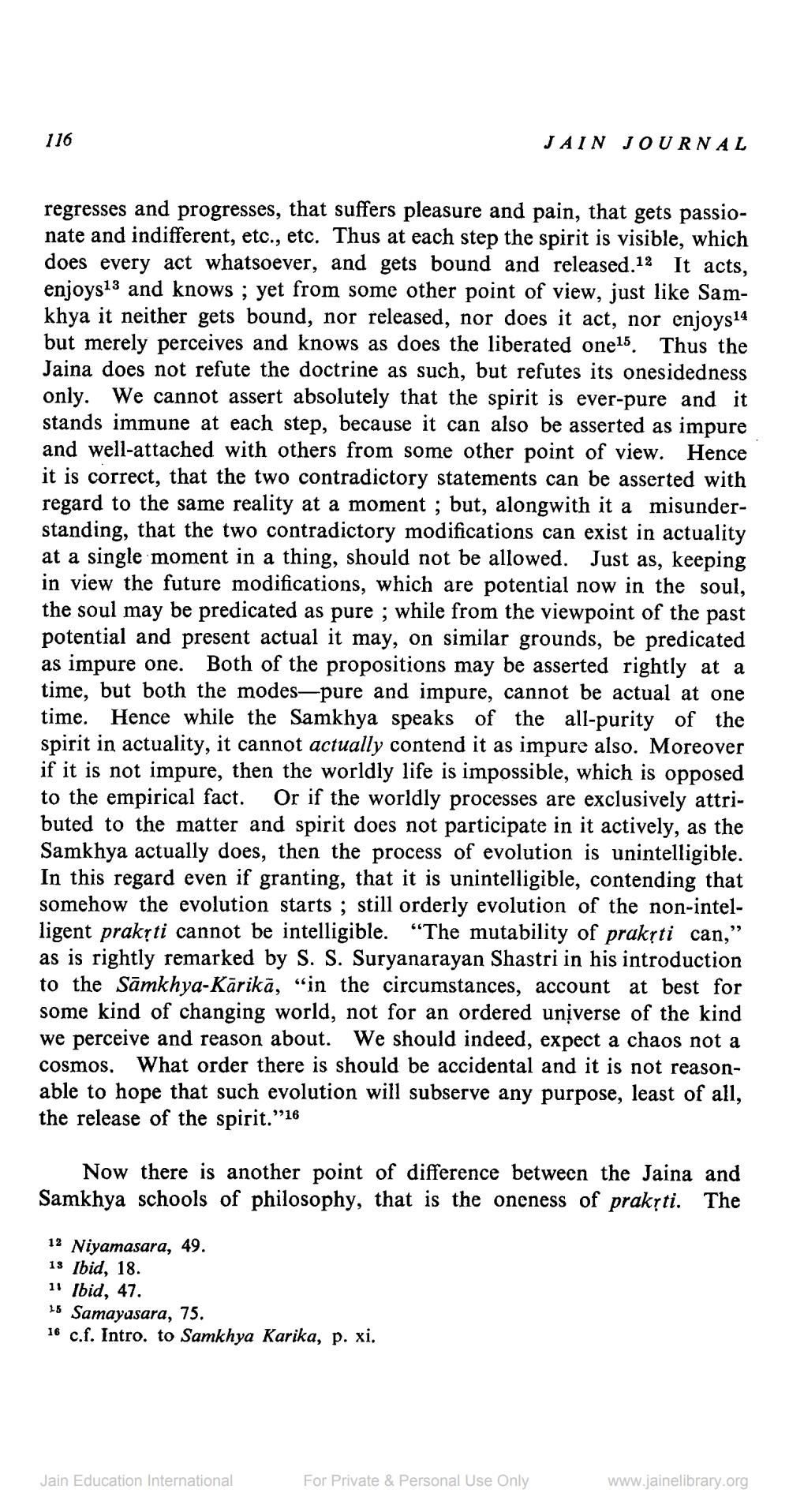________________
116
regresses and progresses, that suffers pleasure and pain, that gets passionate and indifferent, etc., etc. Thus at each step the spirit is visible, which does every act whatsoever, and gets bound and released.12 It acts, enjoys13 and knows; yet from some other point of view, just like Samkhya it neither gets bound, nor released, nor does it act, nor enjoys14 but merely perceives and knows as does the liberated one15. Thus the Jaina does not refute the doctrine as such, but refutes its onesidedness only. We cannot assert absolutely that the spirit is ever-pure and it stands immune at each step, because it can also be asserted as impure and well-attached with others from some other point of view. Hence it is correct, that the two contradictory statements can be asserted with regard to the same reality at a moment; but, alongwith it a misunderstanding, that the two contradictory modifications can exist in actuality at a single moment in a thing, should not be allowed. Just as, keeping in view the future modifications, which are potential now in the soul, the soul may be predicated as pure; while from the viewpoint of the past potential and present actual it may, on similar grounds, be predicated as impure one. Both of the propositions may be asserted rightly at a time, but both the modes-pure and impure, cannot be actual at one time. Hence while the Samkhya speaks of the all-purity of the spirit in actuality, it cannot actually contend it as impure also. Moreover if it is not impure, then the worldly life is impossible, which is opposed to the empirical fact. Or if the worldly processes are exclusively attributed to the matter and spirit does not participate in it actively, as the Samkhya actually does, then the process of evolution is unintelligible. In this regard even if granting, that it is unintelligible, contending that somehow the evolution starts; still orderly evolution of the non-intelligent prakṛti cannot be intelligible. "The mutability of prakṛti can," as is rightly remarked by S. S. Suryanarayan Shastri in his introduction to the Samkhya-Kārikā, "in the circumstances, account at best for some kind of changing world, not for an ordered universe of the kind we perceive and reason about. We should indeed, expect a chaos not a cosmos. What order there is should be accidental and it is not reasonable to hope that such evolution will subserve any purpose, least of all, the release of the spirit.":
16
Now there is another point of difference between the Jaina and Samkhya schools of philosophy, that is the oneness of prakṛti. The
12 Niyamasara, 49.
13 Ibid, 18.
11 Ibid, 47.
15 Samayasara, 75.
16 c.f. Intro. to Samkhya Karika, p. xi.
JAIN JOURNAL
Jain Education International
For Private & Personal Use Only
www.jainelibrary.org




